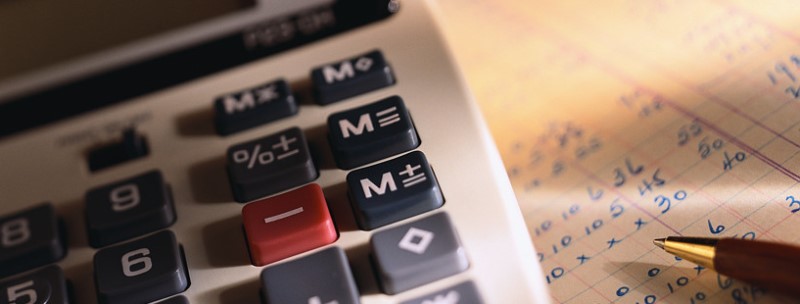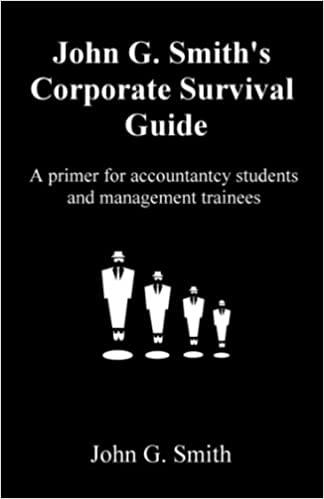Balance Sheet FAQ’s
Top Ten Most Frequently Asked Questions on how to interpret a Balance Sheet

Q. Under “99 business definitions – accounting terminology” the alternative of OFF being more important than ON was given in relation to a balance sheet, was this a joke?
A. No it was not. Whilst it is probably true that off-balance sheet financing is not as big a problem as it used to be and due mainly to the tightening of accounting standards, the reader of balance sheets must always be on guard to detect new ways to borrow money and hide it from the eyes of the financial scrutiniser. Where it exists, off-balance sheet financing allows a company to borrow and hide this action and therefore for the borrowings to not affect calculations of indebtedness such as “gearing” (see later). The motive may be to mislead investors and remain within debt covenants. The balance sheet interpreter should study the subject of Special Purpose Vehicles (SPV’s) because their use can be open to abuse. SPV’s have often been used to manipulate balance sheets and notably in recent times by Enron.
Q. How can I tell from a balance sheet if a company is using Operating Leases?
A. The trouble is, you usually cannot and it might be very relevant to an assessment of the financial state of the company, especially in circumstances where such leases have been used in preference to Hire Purchase or a Business Loan as a means of finance. These two will appear on the balance sheet under either short or long-term liabilities whereas the operating lease will almost certainly not appear at all. One way to look for this activity is to scrutinise a heading such as “Rental of equipment” in the Profit & Loss Account. If this is a significant figure, operating leases could be in play and you should ask for details.
Q. Will I get a true picture of borrowings and commitments when Finance Leases are used?
A. Yes because under the rules of finance leases, the underlying asset must appear on the balance sheet of the lessee (the party that uses the asset). Specifically, the amounts due on the lease must be shown under liabilities and also divided between amounts due within one year and in later periods.
Q. I often hear about gearing. Can you explain exactly what it is and how it can be measured from the balance sheet?
A. Gearing (or leverage) measures the extent to which a company is funded by debt. The measurement of debt is probably the most important task in interpreting the financial health of a business and it is why the questions 1 & 2 (above) are given top billing. The most used definition of gearing (there are others) is “debt divided by shareholders funds – also known as equity”. It is expressed as a percentage and as a rule of thumb, a figure of 100% is considered to be high. In the context of measuring the gearing of a company, debt includes only borrowings and not other debt such as trade creditors. On the other side of the equation, it is usual to subtract goodwill from the value of shareholders’ funds on the basis of it representing history and not present financial strength. It is necessary to have regard to the nature of the business in deciding whether the level of gearing is safe or a risk. For example, non-cyclical stable businesses (say public utilities) can justify higher levels than more fickle beasts such as in the leisure sector. To assess the effect of gearing on a company, look at “interest cover” that is how many times profit after tax is greater that total interest charges. Two or three times greater is obviously safer than just one times.
Q. Gearing has been explained, is operational gearing the same thing?
A. No. Operational gearing is a feature of fixed costs. If two companies have the same turnover and the same net profit, the effect of increased sales on net profit will be determined by the degree to which costs are variable (move in relation to sales – distribution costs perhaps) or are fixed (not affected by sales growth – maybe rent for example). The company with the higher fixed costs will make more profit with an increase in sales simply because they stay fixed. Of course the converse is also true, that is lower sales means less margin over the variables to cover these costs. When studying the balance sheet, open up the profit & loss account and study the variable and fixes costs as best you can to assess how a change in turnover will impact net profit.
Q. What is meant by the current assets ratio?
A. One looks at the current assets ratio to determine a company’s ability to pay those liabilities that have to be paid soon by liquidating the assets that should yield cash the quickest. It is found by dividing the current assets by the current liabilities (refer to “how to read a balance sheet”). Normally, a current asset ratio of two is considered adequate. If the ratio is less than this and certainly if it is negative, red lights should be flashing.
Q. Can you explain the term “Quick assets ratio”?
A. We need to go back to the current assets ratio because one problem with it (depending on the type of business being looked at) is the inclusion within the current assets of stock. Stock may not be turn-able into cash in anything like the timescale needed in an emergency or perhaps only at a big discount. The quick asset ratio therefore deducts stock from the current assets so it is found by current assets minus stock divided by the current liabilities. A quick assets ratio of more than one is usually thought of as ok. This ratio is also known as the acid test ratio and this is arguably a better title since it represents the most demanding of all the commonly used tests of short-term financial stability.
Q. Aside from the acid test, how else is cash a determinant of financial strength?
A. The acid test is intended to gauge liquidity as at the balance sheet date but there is a measure called “operating cashflow ratio” that uses cashflow over an accounting period. It is found by dividing operating cash by current liabilities. If the answer is less than one it means that the business has generated less cash in a full year than it needs to pay off its short-term liabilities at the end of that year. This fact may well signal a need to raise money and once again a red light should be flashing. Often the operating cash ratio is used to compare companies across a sector or to look at changes over time. The reconciliation between cashflow and profit is always a useful piece of information to study because it highlights the non-cash elements that made up the profit such as depreciation and accruals and the cashflow resulting from movements in working capital as distinct from actual trading in the period.
Q. What is the working capital ratio?
A. It is an indicator of the efficiency of a company’s management of stocks, debtors and creditors. It is expressed as stocks plus trade debtors minus trade creditors divided by sales. For example, if the working capital ratio is 0.3, it means that the business needs 30p of working capital for every £1 of annual sales. Therefore, if annual sales increase by £1m then the company will have to invest £300,000 in working capital to be able to fund this increase in business. Modern accounting packages express debtors and creditors in terms of days of elapsed time to pay or be paid, this is most useful in improving the working capital ratio.
Q. Why is dividend cover important?
A. Here we have another example of prudence or profuseness. Companies pay out dividends to satisfy their shareholders that in turn assists the share price that builds the market value of the company. But, are they paying too much? Is what they are doing safe and can it be sustained? Dividend cover measures how many times the profit could have funded the dividend. It is found by the formula earnings per share divided by dividends per share. There needs to be a word of warning about the definition of “earnings” in this context of dividend cover. It will always be expressed after tax but does it include any one-offs or items outside the normal core activity? Try to find out before forming a judgement.
jgs-2010



